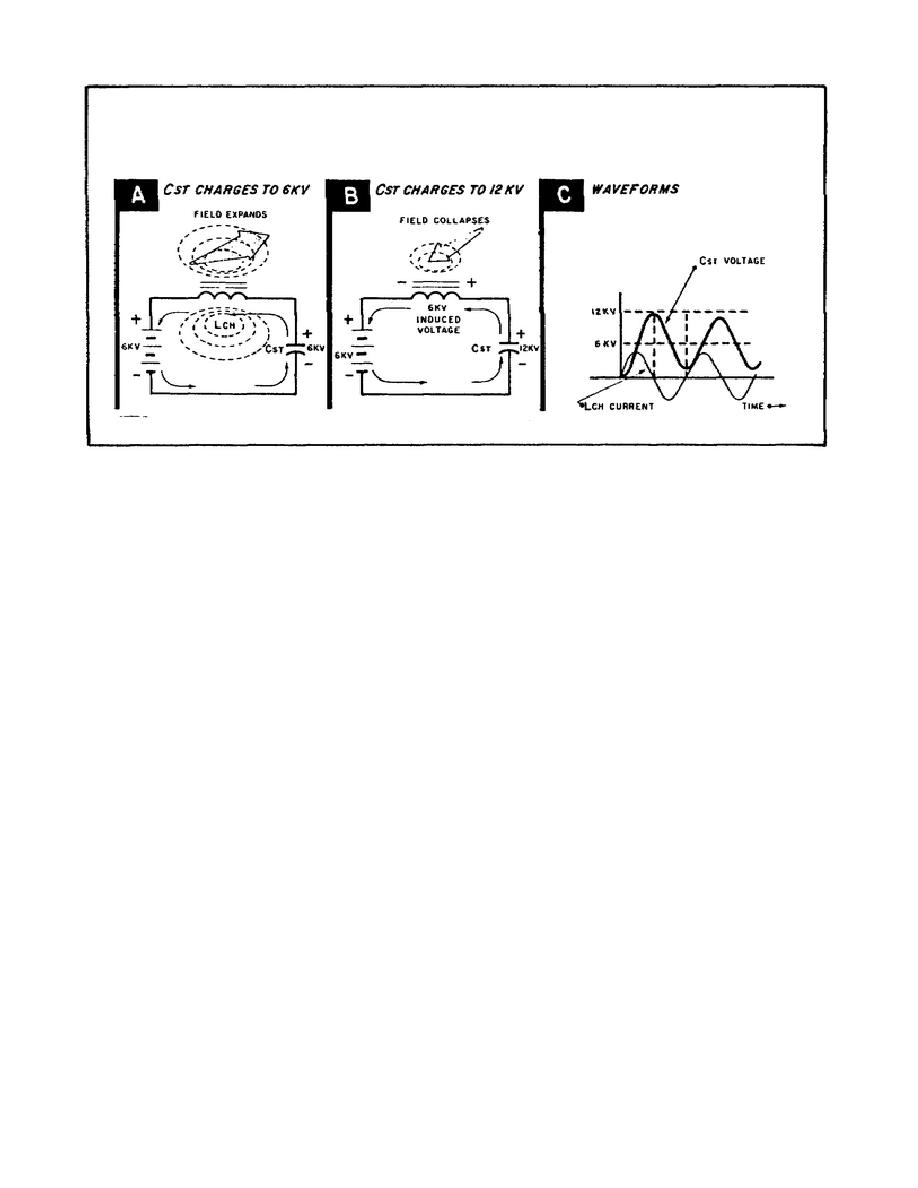
Figure 60.
How Cst Charges to Twice the Source Voltage.
3.
Discharge cycle.
a. At the instant the switch closed, the voltage across Cst drops to
half the voltage to which it has been charged, 6,000 volts. After two TDs,
the voltage across Cst drops to zero.
Part A of Figure 61 shows the
rectangular pulse developed across the load. At the first instant of time
(when the switch closes), the load voltage goes from zero volts to minus
6KV. The pulse remains constant at minus 6KV for two TDs. Then, it falls
to zero again. This pulse, as you know, goes to the magnetron.
b. Part B of Figure 61 shows that to get maximum voltage across Cst,
the switch must be timed to fire at the peak of the voltage oscillation.
The time the switch fires is represented by positive triggers in Part B.
Directly below these triggers are the voltage and current oscillations.
Notice that when Cst voltage is maximum, the switch closes, causing Cst to
discharge in two steps to zero volts. Then, Cst charges again to twice the
source voltage. At the peak of the voltage oscillation, the switch closes
again, discharging Cst.
76


 Previous Page
Previous Page
